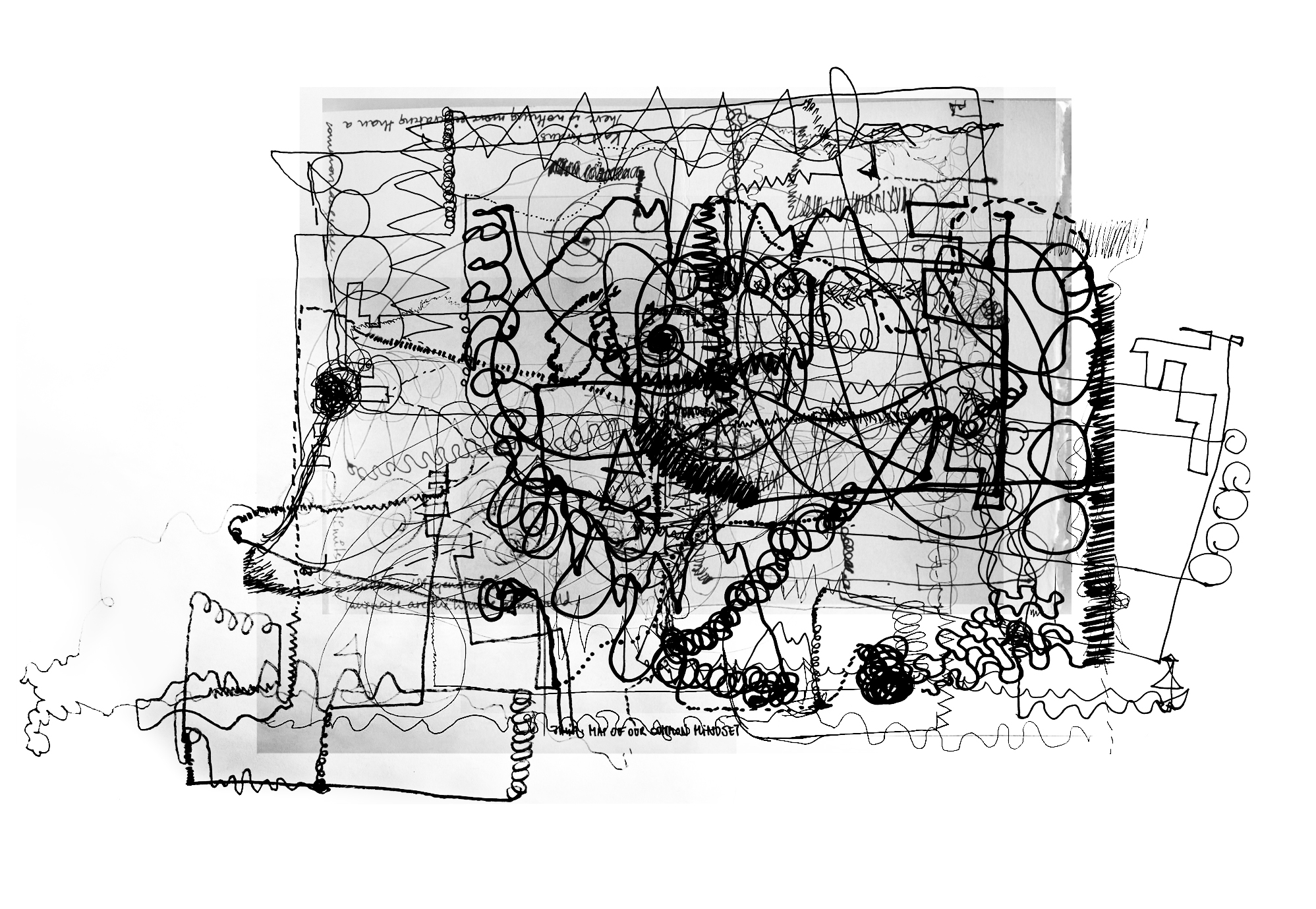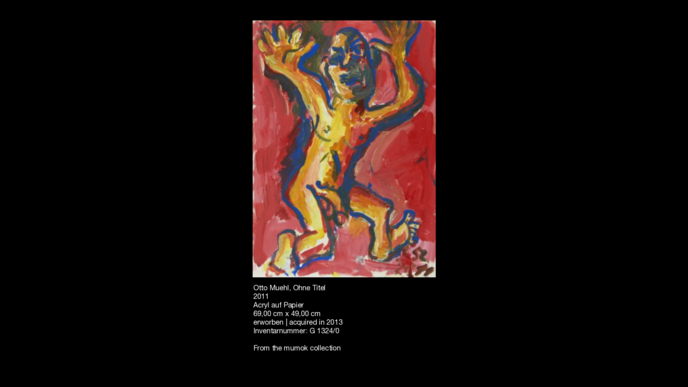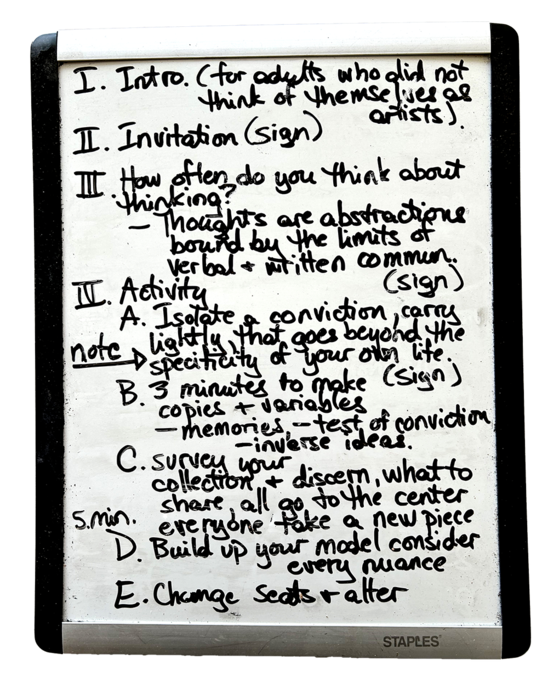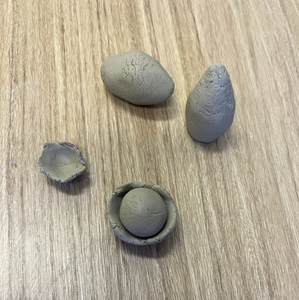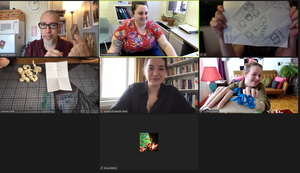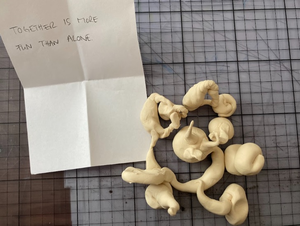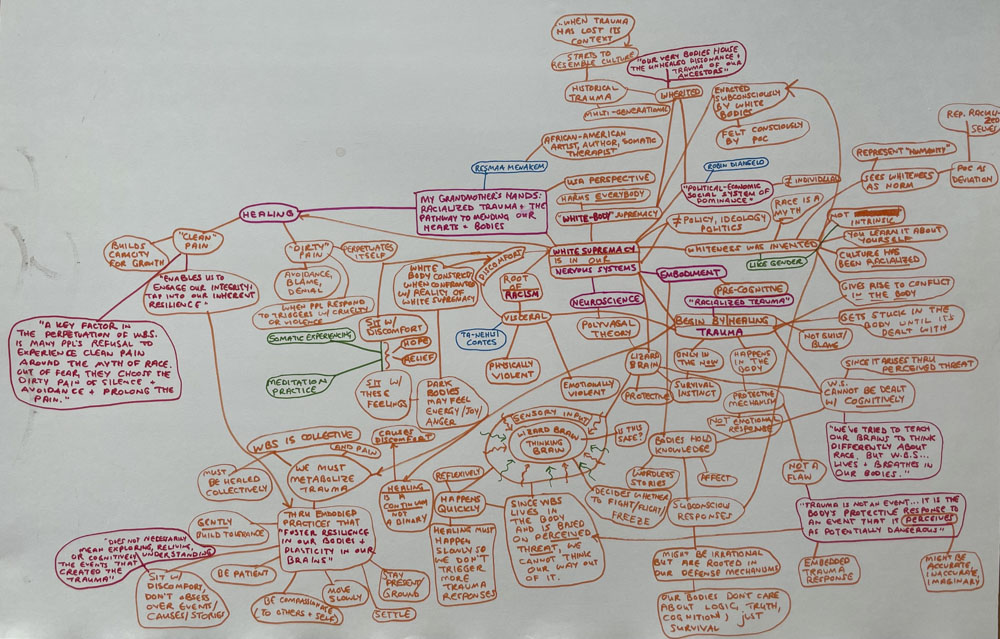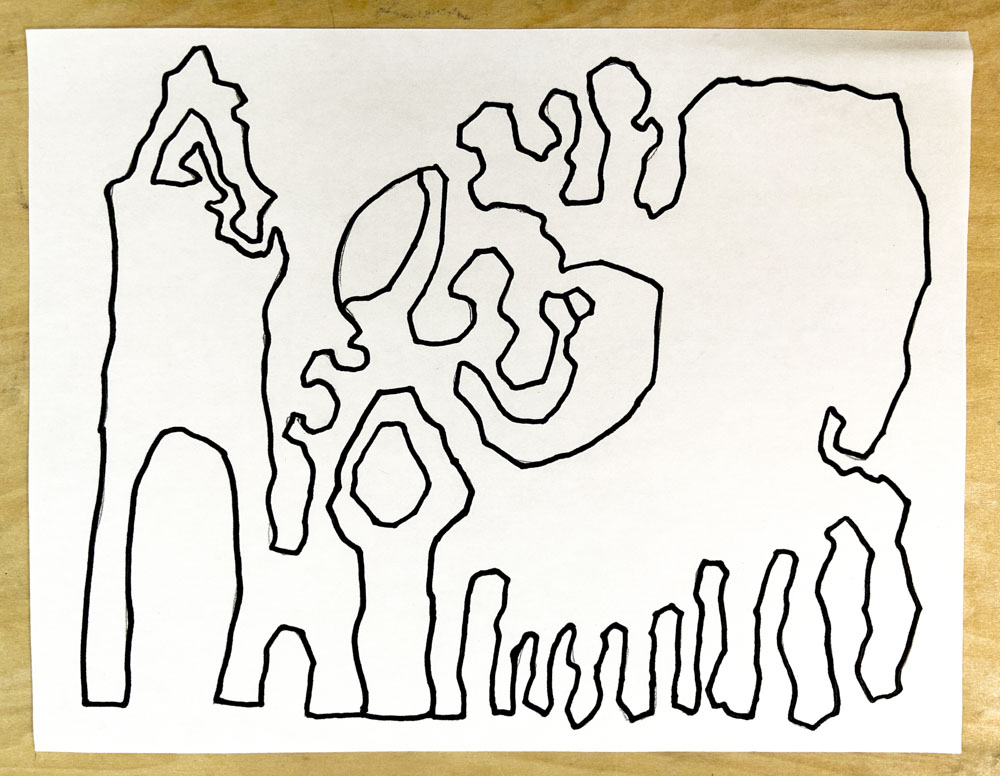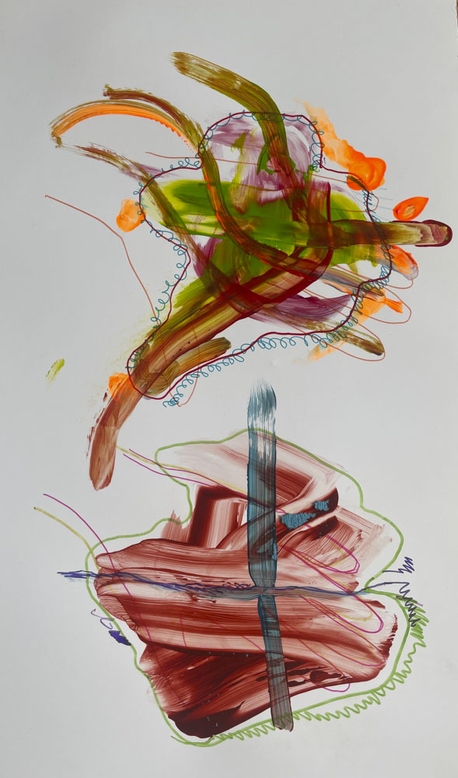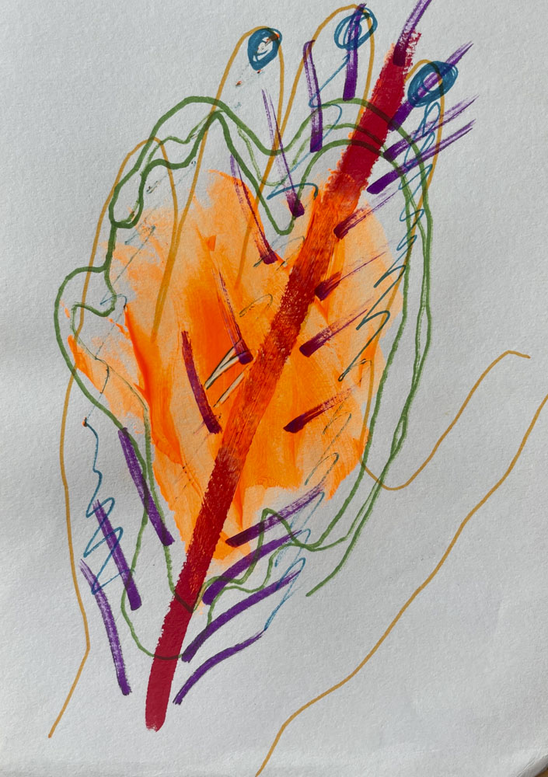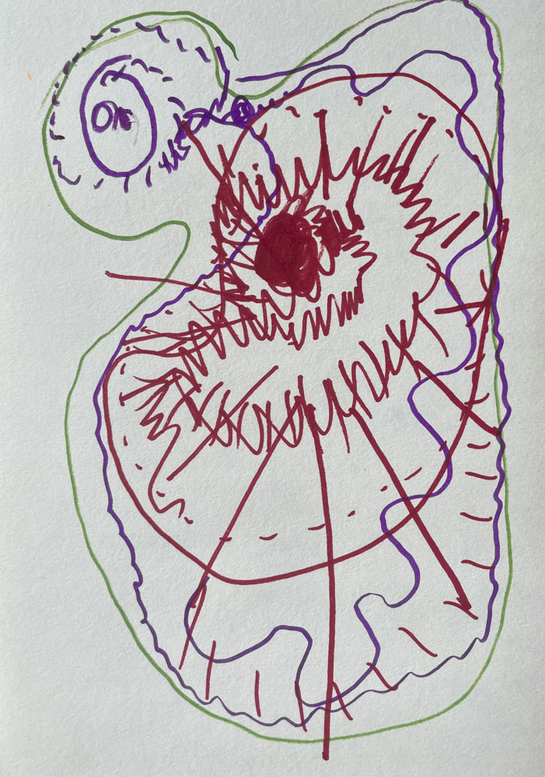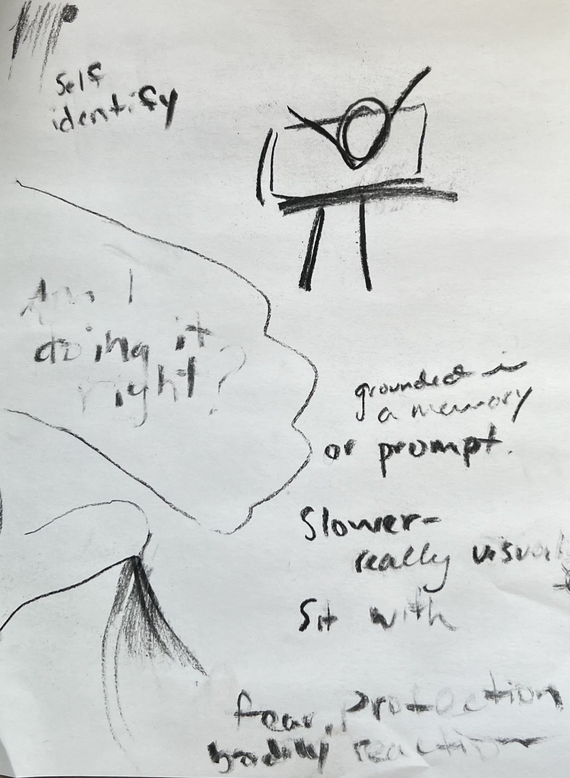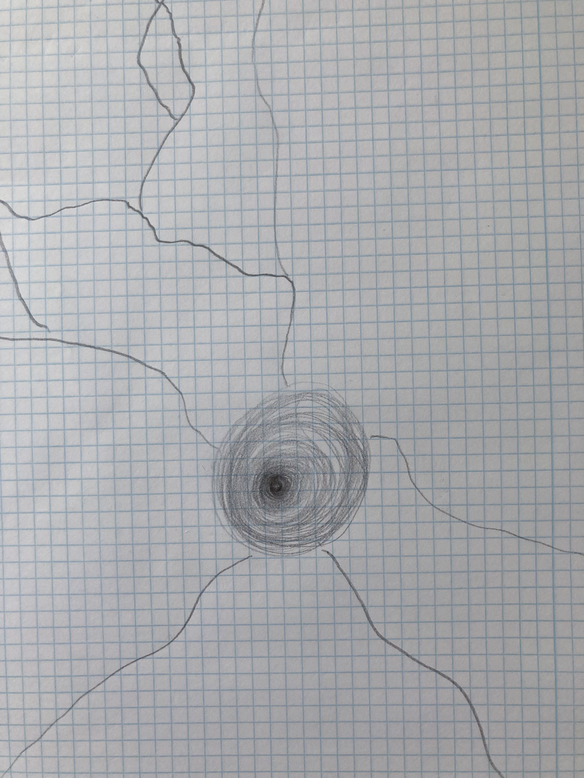Arzu Mistry is an educator and artist and maintains a high level of dedication and enthusiasm for art, craft and design, as mediums for pedagogy, advocacy, transformation, and intervention for the building of sustainable inclusive communities. Arzu is the founder of the Art in Transit and placeARTS public art projects in the city of Bangalore with a focus on art as a medium for dialogue between people and the urban spaces they inhabit. Arzu co-facilitates the Accordion Book Project and is the co-creator of the artist book Unfolding Practice: Reflections on Learning and Teaching. Her art and education practice connects teachers, youth and families with place using memory, story, play and design practices through inter- disciplinary education and public community art facilitation, livelihoods training, teacher professional development and educational research and practice. Arzu led the Creative Education undergraduate program and co-led the Public Pedagogy and Arts Practice Masters program at the Srishti Manipal Institute for Art Design and Technology in Bangalore. She was a fellow with Reimagining Migration and has taught with the Project Zero Classroom, the Future of Learning and Arts and Passion Driven Learning programs at the Harvard Graduate School of Education. From May 2021 – 22 Arzu facilitated an education working group for Creative Dignity, a consortium of organizations working with crafts communities in India. Arzu is currently pursuing her doctoral work with a focus on craft-integrated learning at Teachers College, Columbia University.
Verena Miedl-Faißt: I am artistic researcher, writer, friend, art educator and photographer based in Vienna and its neighboring woods. Currently, I am PhD in Art candidate at Center Research Focus at the University of Applied Arts Vienna. My partners are mostly children – in institutional contexts (school, museum) but also individuals like my main-collaborator Nirual Kenabru (artist name), who happens to be my nephew. Doing together, perceiving together, finding words or other forms of expression to me are ways to relate – to each other and to other world-bits. This is my artist website: www.verenafaisst.com
T Braun is an interdisciplinary artist who creates virtual worlds, drag performances, and interactive installations that challenge binary notions of gender. They are currently based in Tiohtià:ke (otherwise known as Montreal) pursuing a Ph.D. in Humanities at Concordia University. Their research-creation project explores the rich intersections of queer embodiment and VR, a concept they call Virtual Queerality. They are collaborating with trans and non-binary communities in the social VR platform VRChat to build a web VR archive where gender non-conforming people can share their stories, explore new means of virtual embodiment, and envision speculative futures.
Jason Watson is a mixed-media artist and educator, whose studio practice combines explorations of figures, found objects, architecture, and text as visual materials that both reveal and conceal elusive layers of meaning. His work has been shown at galleries, universities, and nonprofit spaces throughout the US and the New York City metropolitan area. His artist residencies include the Newark Museum of Art, Cooper Union Emerging Artist Residency Program, the Lower East Side Printshop, the Elsewhere Living Museum, the Ragdale Foundation, and the Oberpfalzer Kunstlerhaus in Schwandorf, Germany. He participated in the Lincoln Center Summer Education Forum in 2018 and 2019 and is an alumni member of the Goodyear Artist Collaborative.
Watson was awarded the first Wesley Mancini Artist Residency at the McColl Center for Visual Art + Innovation in 2013. He has presented papers and projects at national academic conferences including “Creating in the Queer Diaspora”, a study of LGBTQ creative production in non-urban areas with Queer Caucus for Art at the College Art Association. As an art educator, Watson has taught a wide variety of drawing, painting, and printmaking classes and workshops over the past two decades at colleges, universities, and community spaces. He served as the Director of Visual Art Programs for Arts+, a nonprofit in Charlotte, North Carolina that provides art education to underserved populations. Watson is currently pursuing a Doctorate in Art Education at Teachers College, Columbia University. He holds a Fellowship in Ceramics at Teachers College and is the co-editor of the upcoming publication “Turning Points: Responsive Pedagogies in Studio Art Education” with Dr. Richard Jochum and Dr. Judith M. Burton.
Marla Heid: I am a researcher incorporating means of visual art, curation and writing. I studied Art Theory in Berlin and Beijing, hold a Master’s in Art and Politics from Goldsmiths, University of London, and completed the Post-Master degree Of Public Interest at the Royal Institute of Art in Stockholm. I am a PhD candidate at the University of Applied Arts in Vienna. Both my academic research and artistic interest explore the changes public spaces are going through and discuss the knowledge, methods, and values artistic practitioners produce within. While my academic research analyzes conceptual strategies of artistic practices in public space and investigates the aesthetic appreciation of the dematerialized art object, my visual practice adapts poetic expressions that focus on the development and testing of constructive models that support the critical examination of the public space as a site for democratic interaction through artistic intervention. Within this framework I explore concepts of collective and individual memory, perceptions of space, permanence and impermanence. I am currently working on a project about multidirectional memory in relation to the concept of borders. Although my focus is on conceptual art practices, I am very interested in socially engaged and participatory art practices in public space.
Julia Stern is a graphic designer, illustrator, artist and teacher from Vienna. She was trained as an Applied Fashion Designer at the Vienna School of Art, studied Theater Studies and Journalism & Communication Studies at the University of Vienna, majoring in Stage and Costume Design and Media Design. In 2015 she started further education at the University of Applied Arts in Vienna at the Institute of Art Science & Art Education, for Design, Architecture and Environment (DAE) and Textile - free, applied & experimental artistic design (TEX).
Working as a graphic designer, illustrator, artist, teacher, her permanent engagement with social and educational issues and economic contexts, as well as her interest in material culture and modes of production, find expression in mostly textile and material-related works. In her works there is also an intensive reference to language, whereby she always tries to take a light-hearted look at what she is doing. In the field of graphic design, she has extensive experience in magazine design and educational design for adult education.
As one of the winning participants of the Octopus 2020 program, she is continuously working on a project about free and intuitive communication in the context of eating together as a social event - a moment of sharing and exchanging. Her current work explores personality, vulnerability, and protective mechanisms.
As a teacher, she is particularly interested in those processes that drive social interaction and contribute to shaping and advancing society towards a better one. She sees art as a suitable way to raise awareness of issues - detached from documentarism - and that art education is suitable to offer alternative logics and open more innovative spaces of thought. She believes in the power of humor as a motor for overcoming limits, especially in teaching and learning processes.
Steph Spitz: My artist website is located at www.stephaniespitz.com which include themes on gender and familial roles, performative identity, mental illness, and the concept of home in relation to materiality and memory; and more recently the connection of the body to these spaces and memories. My current research is in the area of higher education; specifically arts education through a DEIA+ lens. My projects use data analysis to create recommendations for educational institutions for greater racial equity, decolonisation, organizational change, and to better serve students with disabilities. For this conference I am most interested in exploring the policies, tools, and practices that artists and art educators employ to create more equitable spaces for learning and making. Additionally, exploring connections from leadership theories of care and equity-mindedness through the lens of art education and practice. I hold a BFA in Painting, MFA in Studio Art and am pursuing an MA in Higher Education; I work full-time as the Department of Art and Design Administrator at MSU and teach Visual Arts courses part-time.
1, PROMPT
In a brief paragraph or two please share an experience in which your roles as artist, educator, facilitator, and/or participant became complicated in the course of an artistic engagement. In your reflection consider:
- The dynamics of negotiation between roles
- How we navigate/move through powerful affective states (e.g. fear, loss)
- What motivated/instigated a shift or complication of roles
Find connections: Once you have shared, please read someone else's entry. Choose a word or phrase from their writing. Copy and bold this word or phrase, and articulate your connection to that idea. Make the connection visible by highlighting it or/and commenting on it.
Arzu
From 2014 to 2021 I co-facilitated a public art project with the Bangalore Metro Rail Corporation (BMRCL), the entity that builds and manages the subway system. Our project started at one metro station and then eventually spread to four other stations. It took years to get permission to work with the Metro because it was a new system and the government had no experience working with artists. They were also suspicious about working with artists because the city artists (including myself) were a big part of protests against the BMRCL for their practices of cutting down a large number of trees and evicting primarily low income communities as they acquired land far below market value. Through this project there were many role tensions that played out:
-
The biggest one being as mentioned above, was that the Metro system was part of a larger development agenda by the government for a much needed mass public transport initiative in the city, yet was being implemented with little regard for people or environment, sparking large scale protests across the city. Artists in the city were actively protesting this and once we started working with the Metro there were many tough negotiations as to which artists we could work with and not. From our end we kept clarifying that we are an open platform as per the agreement, while the Metro kept rejecting certain artists proposals. This took a long process of negotiations to get past.
-
Another role tension that surfaced was the role of the educator and the artist. I and my colleagues were professors at an art and design college in the city and initiated this project so students interested in working in the public sphere could have a steady set of public sites to develop longer term projects and research trajectories. We moved our classes into the Metro station, and that was a fantastic opportunity and privilege. Through the many years we were at the stations, we also became a platform for city artists to partner with the Metro. Through the process of working with the BMRCL, they constantly pushed for big impact projects while we were looking at smaller projects focused on value for the students and the context. This surfaced different binaries of gentrification verses diversification, global versus local, archival vs ephemeral. I will share specific anecdotes of this as our conversation proceeds.
Marla
I chose an example that is related to art mediation and communication as the connecting factor between the artist/work and the audience.
On the premises of the Giardini della Biennale in Venice (the traditional site of La Biennale Art Exhibitions) is a bookshop, designed by artist Rirkrit Tiravanija, as part of the exhibition reorganization of La Biennale venues in 2009. Tiravanija is known for a practice that overturns traditional exhibition formats in favor of social interactions through the sharing of everyday activities such as cooking, eating and reading.Entering the bookshop, the work description in English (and Italian) says:
Though claiming to want to destroy capitalism and imperialism, Tiravanija is no antagonistic political activist but rather someone who, in a helpful and generous way, suggests models for being together, for communicating, and for exchanging things in a manner that resists reducing everything to an image of an object. For the Palazzo delle Esposizioni Tiravanija designs a bookstore.
Here, I find the description of the practice and the intention stated incredibly problematic. Choosing words such as helpful and generous suggests the artists position as superior, developing very strong hierarchical perceptions towards the work and the artist. To me this is an interesting example to think about the importance of role of the mediator (and/or curator) between the work and the audience.
Jason
I often find myself negotiating multiple roles in the course of working as an artist and educator, making, collaborating, discussing, exhibiting, researching, and organizing feel boundary-less in my experience of creative work. I sometimes catch myself shifting between modes of conversation and connection (a type of code switching perhaps?) when I am in collaborative art studios or academic classrooms. This feels quite natural and fluid, yet I often feel pulled in multiple directions by conflicting priorities when working in these spaces.
One example that comes to mind of such a dynamic role negotiation occurred in 2016, when I organized the exhibition “Open Occupancy: Artists Respond to HB2” at the McColl Center in Charlotte, North Carolina. I had been an artist-in-residence a few years prior at The McColl Center (a local cultural hub), and was living and teaching in Charlotte, a small southern American city of about a million people, at that time. HB2 was the first of the notorious ‘bathroom bills’ to come before state legislatures in the United States. ‘Bathroom bills’ are transphobic laws that require people to use the public restroom that corresponds to the gender they were assigned at birth. Though ridiculous and often un-enforceable, these laws still work for their intended purpose: to terrorize transgender people and incite transphobia and homophobia.
August of 2016 was a tense time for LGBTQ people in America. Trump was on the cusp of winning the presidency and we could feel the tension, and the hatred, mounting. The Annual Charlotte Pride parade was set for one weekend at the end of August, and many artists in the area wanted to do something to both show queer solidarity and to resist the encroachment of conservative politics on our personal safety and sanity. By coincidence, The McColl Center was located at the start of the parade route. Another happy coincidence: The McColl Center was housed in a large, refurbished church with over eight public restrooms.
So, during the Pride festival, we created art installations in all of these restrooms, addressing ideas around queer resistance, queer liberation, and queer joy. The public was invited in to see the exhibits and use whichever bathroom they chose while doing so, directly in violation of HB2. My responsibilities for this project meant shifting between multiple mindsets: artist, facilitator, curator, art assistant, and even the temporary face of public relations ( I was interviewed for local radio and television). These are all roles I am generally comfortable inhabiting, less so that of protester or political agitator. As well, during this experience I functioned as both a mentor (for several younger artists who had never shown in public venues before) and as a student (of the more skilled and resourceful veteran LGBTQ activists and elders who ran the Pride festival). I look back on this experience and realize it was one of the first times I fully embraced my full queerness in direct relation to art making and art teaching.
Prompt:
As artist-facilitators we seek to create safe and brave spaces in our work with diverese communities. But what do we mean by safe and brave spaces? How do we navigate creating safe and brave spaces when often both figuratively and literally we dont share common language or expereinces? How can we hear, intertwine, and overlay the various diverse perceptions and questions we bring about safe and brave spaces?
There is a bonmot attributive to Karl Kraus, that he probably never has said. In my mind, it goes something like: “There is nothing more separating than a common language.” Versions of this saying by Karl Farkas, Ingeborg Bachmann or Oscar Wilde refer to differences between Germany-German and Austria-German or British English and American English. But what is really interesting, is the delusiveness of easily understanding each other, while overlooking the semantic gap that never allows perfect understanding. But luckily misunderstanding sometimes means understanding something else!
Through a collective drawing and free write exercise, we seek to build a process of listening, sharing and building on each others ideas as we bring diverse perspectives to what safe and brave spaces mean to us. The drawing exercise involves members of the group taking turns in verbally prompting a simultaneous drawing for each member of the group. The resulting drawing serves as a visual structure for our free writes. The writing exercise involves short stream-of-consciousness free writes, with pauses to share, and take ideas from each other. After a few rounds of this, participants stand in a circle and together read and layer the free writes with the group. The outcome is an auditory experience that shares multiple dimensions and perspectives from the entire group.
Questions that serves as a background to the exercise:
How do we facilitate difficult conversations about sensitive issues in multilingual contexts?
What are the ways art and embodied experiences can be used when verbal conversations break down?
Process documentation (to be printed for gallery walk):
Drawing exercise: In the beginning, every participant starts with an empty sheet of drawing paper. The group will take turns in prompting a line everyone is drawing simultaneously with eyes closed. This will result in several versions of the same line – and serve as a visual structure for our free write.
Writing exercise: Participants will then engage in short stream-of-consciousness free writes, then pause, share, and take ideas from each other. After a few rounds of this, participants stand in a circle and together read and layer the free writes with the group. The outcome is an auditory experience that shares multiple dimensions and perspectives from the entire group.
Prompt:
Keywords: controversial artworks, difficult conversations, contextualization, curatorial practices, art mediation, confrontations
The museum as the public institution is the representation of the cultural and artistic arena, and reflects political and social dynamics. Being strongly connected to the transfer of knowledge and education, the museum’s position is equally linked to responsibility. Through a progressive and critical lens the examination of the archives and collections of public museums discloses controversial artworks and artists, sometimes resulting in an artwork or artists being canceled.
Art mediation and curatorial practices frequently apply methods of ‚contextualization‘ in order to have problematic artwork exhibited. However, the term ‚contextualization‘ in itself is ambiguous as it merely describes the consideration of facts or processes of the work in its context, namely the situation within it exists or happens/ed in order to understand it. Although it can be adopted as a curatorial practice in the interest of exhibiting a work, ‚contextualization‘ as a mediative tool should be contested and discussed, as it tends to deny a discursive processing that includes difficult and continuous conversations.
In this session I would like to investigate what can happen after the ‚contextualization‘ of a work.
I would like to use the format of a discussion-based brainstorming that investigates and tests strategies on how to initiate and engage in a continuous conversation. I would like to explore how we as educators and mediators can facilitate such difficult conversation and how those can be continued? How could this continual process be expressed and realized? What is the curatorial and mediative value of a method that can be applied? How can a conversation be navigated and ideas be negotiated? Etc.
In the breakout room, a work of Muehl can be used as an introductory conversation piece.
Verena:
I often find myself negotiating multiple roles in the course of working as an artist and educator, making, collaborating, discussing, exhibiting, researching, and organizing feel boundary-less in my experience of creative work. (Jason)
I don’t know how to articulate a connection between Jason’s phrase and my thoughts because I agree so completely that there is no space in between for spreading out a connection…
My dearest and most important artistic collaborator, co-creator, co-researcher and friend is my nephew L. I think, what we are having together contains the most articulate, poetic and courageous aspects of my artistic work so far. But of course, first of all he is a child, my sister’s son, my mother’s grandchild, my other nephew’s brother (I won’t go in detail about the role-complications concerning all these other relations.) What became an artistic research process is rooted in- and inseparable from our relation as aunt and nephew. We don’t “work” together, we spend time. We’re roaming the “real” woods around our homes or the woods we make up to meet in our minds (living 400 miles apart). We do what other aunts and nephews might do as well and take advantage from not being student and teacher or mother and son: We’re free to follow our misunderstandings, because sometimes misunderstanding means understanding something else. Then, from time to time, we end up at peculiar places no one else would find. So, we’d like to invite other people to join us – and this is where it’s becoming complicated (at the latest). What are we actually doing? What is intimate, what private, what can become public? What means public? How can I discuss this with L., when he’s three, four, five years old? To him, public might mean, that his kindergarden-friends should know. To me, public might mean, that I show and speak about our work within academic contexts like this. The worst nightmare to me is, that he might resent me at some point for what we’re doing, for what I am doing, for sharing the loving space we have. I try to be as transparent to him as I can: We discuss every publication. I always ask for his consent (knowing about the absurdity of this undertaking, being conscious that I am responsible, but I try). He is always fully credited, by now with a chosen pseudonym, in case he might change his mind. And we’re working on an exhibition in the village he lives in, so he can invite the people he’d like to reach as well.
T:
In September 2015, I found myself in front of a class of college students for the first time. At 26, I was not much older than them, and while I sensed a generational divide, I was anxious to establish my authority in the classroom. I had been hired to teach a studio art class designed to educate students, through making, about the relationship between concept and materiality through the lens of contemporary art history. During my interview, emphasis was placed on the fact that some students had never taken an art history class and needed to be exposed to the “creative canon”.
Other professors generously shared ideas and lesson plans. One project involved students selecting an artist from a list of well-known and respected contemporary artists and creating artwork in the style of that artist. I skimmed over the list and recognized most of the names from my years as a student. I added a few extra names and introduced the project to the students, emphasizing how important it was for them to understand the field of contemporary art.
As I spoke, I could see that one student was busy on their laptop and I became annoyed with them for not listening. I decided to speak with them after the lecture. As soon as I stopped talking, they raised their hand. “Professor, can I speak with you?” I sat down with the student but before I could scold them for not listening, they showed me the paper handout I’d given them with the list of approved artists. They’d marked a few of them with stars. “Professor, I looked at the artists you chose. Almost all of them are white men from the United States. Why isn’t the list more diverse? As a queer Latinx student, I want to learn about artists from my own community.”
I was taken aback. My first impulse was to be defensive. I considered myself to be progressive and it was embarrassing for a student to call me out this way, especially since I had just started teaching and was insecure and unsure about my role in the classroom. I explained that the point of the project was for them to familiarize themselves with artists who were well-respected and whose work was of “indisputable quality”. “But who decides that?” asked the student. I didn’t have a good answer for that. “You’re right,” I replied. “This list isn’t diverse enough.” I allowed the student to select a Latinex artist for the project and they did an amazing job, educating not just me but the other students. Their work throughout the semester was outstanding. As Verena has said, an important aspect of learning and teaching is the freedom to “follow our misunderstandings, because sometimes misunderstanding means understanding something else.”
Prompt:
This intuitive, guided drawing session encourages drawing as a tool to metabolize difficult feelings that can arise when confronting issues around racism. Participants will be led through a series of embodied exercises developed by Resmaa Meneken, an African American somatic psychotherapist whose work encourages “an embodied way of living, learning and being that builds resilience and discernment, upends white-body supremacy, and trains our bodies, individually and collectively, to rediscover their natural alignment.”
